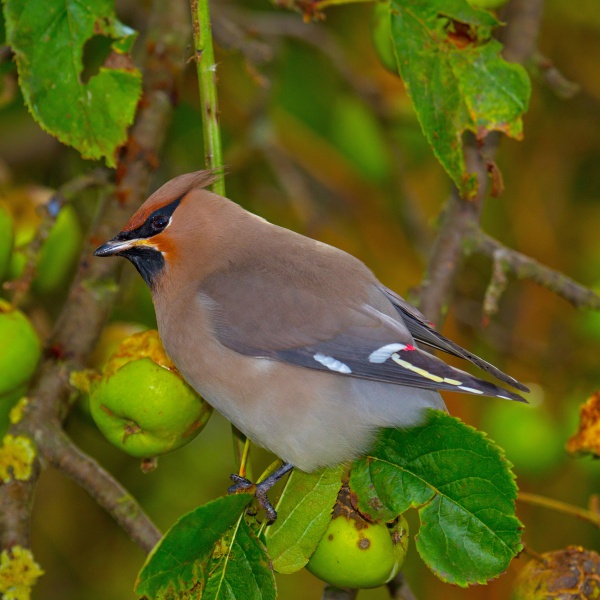Facts About Bohemian waxwing
The Bohemian waxwing is a captivating, starling-sized bird native to the northern forests of the Palearctic and North America. It boasts buff-grey plumage, striking black facial markings, and a distinctive pointed crest, making it easily recognizable. One of its most unique features is the red, wax-like tips on its wings.
These birds prefer coniferous forests near water for breeding. During nesting season, they construct cup-shaped nests and lay between three to seven eggs. The chicks, born helpless, are nurtured by both parents. While Bohemian waxwings primarily consume fruit, they switch to insects during the breeding season. Remarkably, they can metabolize alcohol from fermenting fruit, though it sometimes results in mild intoxication.
In winter, when fruit is scarce, Bohemian waxwings are known for their irruptive movements, traveling extensively in search of food. They belong to the Bombycillidae family, which includes Bohemian, cedar, and Japanese waxwings. The Japanese waxwing is their closest relative within the genus. There are three subspecies of Bohemian waxwings, each exhibiting slight variations.
These birds have a wide distribution, breeding in northern regions and migrating south in winter. They often roost together in large groups. Bohemian waxwings exhibit monogamous nesting behaviors from mid-June to July, though they tend to nest in low densities. They face threats from predators such as birds of prey and risks like collisions with cars or windows. However, they are not subjected to brood parasitism due to their fruit-heavy diet. They do, however, contend with parasites such as mites and blood parasites.
With a global population estimated at over three million, Bohemian waxwings are classified as "Least Concern" by the IUCN, thanks to their large numbers and extensive breeding range.

 Russia
Russia